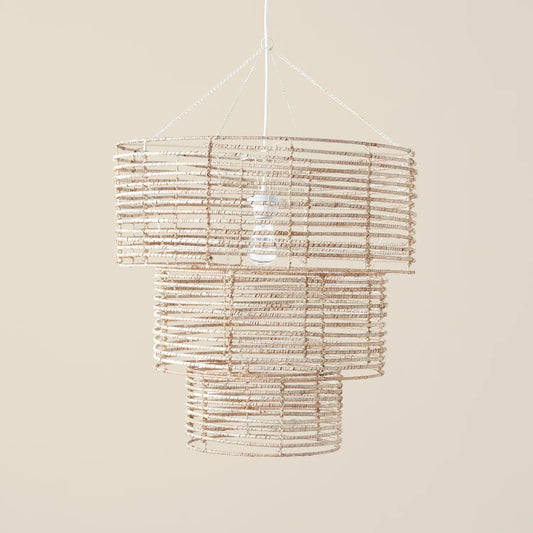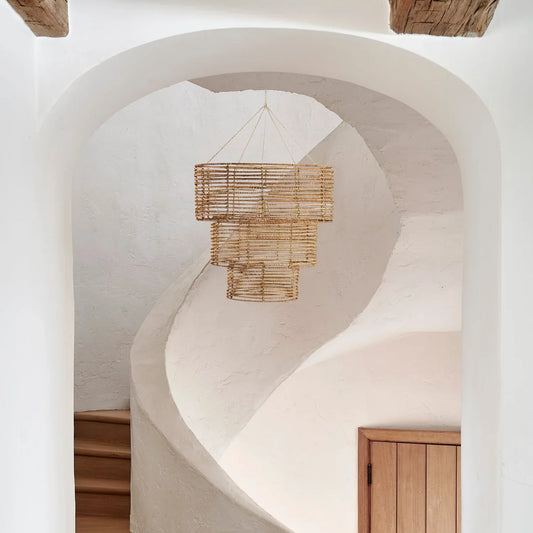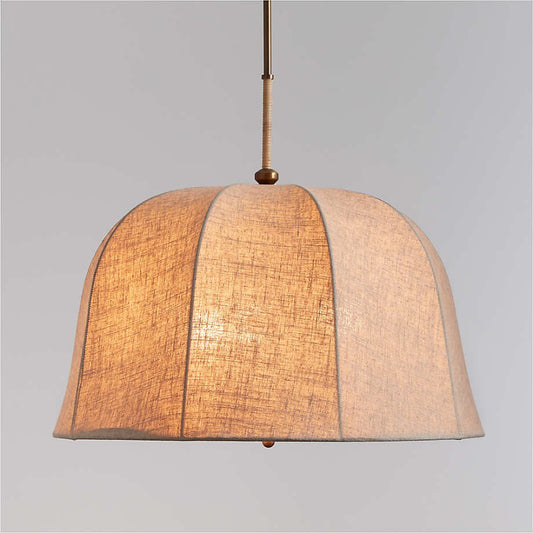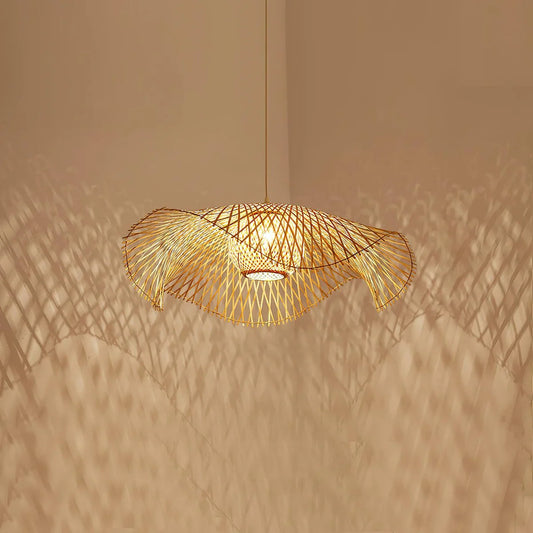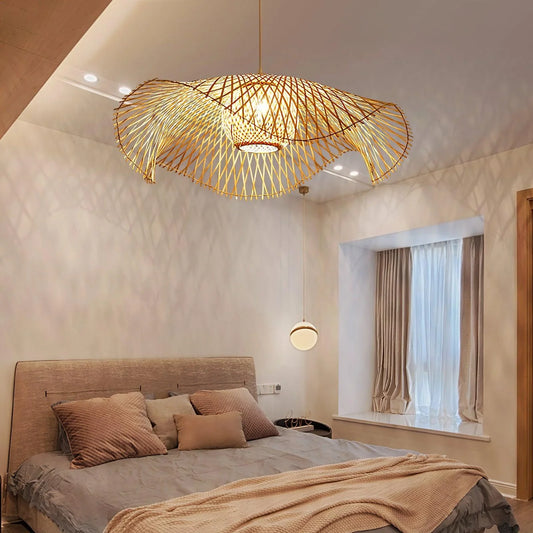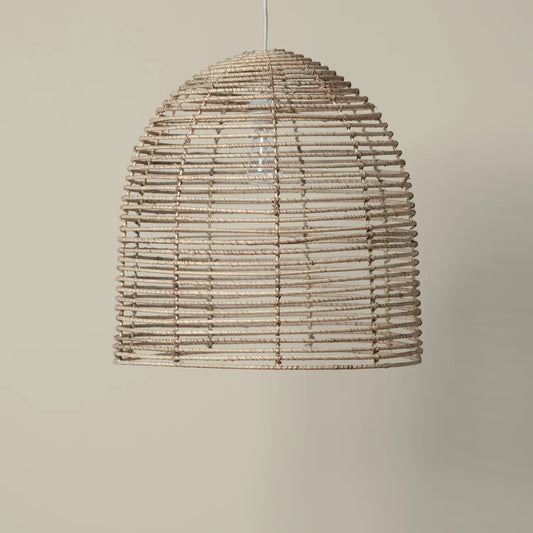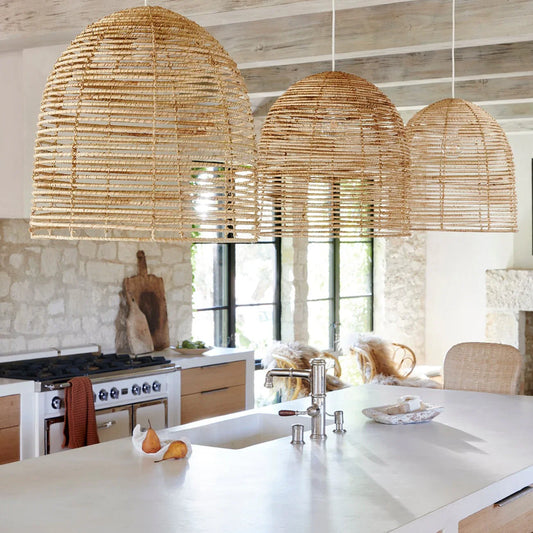[Update 2025] - How to Take LED Lights Off Without Ripping Paint
KLOE LIGHTINGAre you looking to remove your LED lights but concerned about damaging your walls or peeling off the paint? You're not alone! While LED lights add a sleek, modern touch to any room, taking them down can seem like a tricky task.
But don’t stress out—removing LED lights safely and without harming your painted surfaces is easier than you think. In this step-by-step guide, we'll walk you through the best methods to ensure a smooth removal process, leaving your walls looking as good as new. Let’s get started and keep your space in top shape!
- Required tools and materials
- How to take off LED lights without damaging the paint?
- Step 1: Disassemble with care
- Step 2: Apply gentle heat
- Step 3: Peel slowly and gently
- Step 4: Remove residue carefully
- Step 5: Clean and dry
- Step 6: Touch up (If necessary)
- How to reapply LED lights without harming the paint?
- When to pursue professional assistance?
- Faqs: How to take LED Lights off without ripping paint?
- Conclusion
Required tools and materials
To safely remove LED strip lights without harming the paint underneath, it's important to choose the right tools and materials that are both effective and gentle. Key items needed for this process include:
- Hairdryer/ Heat gun: This is essential for warming up the adhesive, making it softer and easier to detach without damaging the paint. Use a low to medium heat setting to prevent overheating the paint or the strip.
- Plastic putty knife/ Spatula: These tools are ideal for carefully lifting the edges of the LED strips. Their plastic design reduces the chance of scratching or harming the wall surface.
- Isopropyl alcohol/ Adhesive remover: Perfect for breaking down any leftover adhesive on the wall after the strip has been taken off. Choose a product that is safe for painted surfaces to avoid discoloration or damage.
- Soft cloths/ Cotton swabs: These are necessary for applying the adhesive remover and gently cleaning the surface without causing scratches.
- Gloves: To protect your hands while using adhesive removers or handling the LED strips if they have warmed up from the heat gun.
- Safety Goggles: To shield your eyes from potential splashes when using solvent-based adhesive removers.

To safely remove LED lights without damaging your walls or paint, you’ll need a few essential tools and materials. Source: VST Lighting (1)
For optimal results, it's advisable to select adhesive removers specifically designed to be gentle on painted surfaces. Always conduct a patch test in a small, hidden area first to ensure there’s no harm to the paint. Additionally, having several clean, soft cloths available will assist in the careful cleaning and drying of the area once the LED strips are removed.
How to take off LED lights without damaging the paint?
Removing LED lights from your walls without damaging the paint may seem daunting, but with a careful and methodical approach, you can easily achieve a smooth removal. Follow these steps to ensure the lights come off safely, leaving your walls intact and looking fresh. Here's a step-by-step guide to help you through the process:

Removing LED lights without damaging your painted walls is entirely possible with the right approach. Source: Darkless LED Lighting (2)
Step 1: Disassemble with care
Start by unplugging the LED lights from their power source. Gently remove any clips, holders, or adhesive strips securing the lights to the wall. Avoid applying too much pressure to prevent straining the paint or causing damage. Patience is key—take your time and proceed carefully.
Step 2: Apply gentle heat
Heat is a valuable tool when removing adhesive without harming your paint. Use a hairdryer set to the lowest heat setting. Hold it a few inches away from the lights and move it around to ensure even warmth. The heat will soften the adhesive, making it easier to peel off without damaging the wall or paint.
Step 3: Peel slowly and gently
Once the adhesive is softened, begin peeling the LED strip from the wall. Start at one end and pull slowly, applying even pressure. If you encounter resistance, reapply heat to the area and continue gently peeling. Always pull at a slight angle to keep the light strip aligned with the wall, minimizing the risk of damaging the paint.
Step 4: Remove residue carefully
After removing the lights, you may notice adhesive residue left behind. To clean it off, dampen a cloth or sponge with mild soap and warm water. Gently rub the residue in circular motions to loosen and remove it. Avoid aggressive scrubbing, as it could damage the paint.
Step 5: Clean and dry
Once the adhesive is gone, wipe the area with a clean, damp cloth to remove any remaining soap or residue. Allow the wall to dry completely before moving on to the next step.
Step 6: Touch up (If necessary)
If you notice a slight color difference between the painted section and the surrounding wall, a touch-up may be needed. Use a small amount of matching paint to fill in the area. Allow the paint to dry completely before assessing the result to ensure a seamless finish.
How to reapply LED lights without harming the paint?
If you need to reattach LED lights without damaging the paint, there's no need to worry. There are many solutions available that can help you do this safely.

Once placed, apply gentle pressure along the strips to make sure they stay in place. Source: Elstar LED (3)
Step 1: Remove remaining adhesive
Before reattaching the LED lights, it’s important to remove any leftover adhesive from the previous installation. You can easily do this by using acetone or a citrus-based cleaner.
Both options are effective at dissolving adhesive without harming the wall’s paint. Gently rub the surface with a cloth or sponge until all residue is removed.
Step 2: Choose the right adhesive
There are several adhesive options available that are safe for painted walls. Some of the best choices include:
- W3 Tape: Known for its strong bond, W3 tape is easy to apply and won’t damage paint when removed.
- Command strips: These strips are designed for damage-free removal, making them an excellent choice for hanging LED lights.
- Adhesive clips: Ideal for holding LED strips in place without leaving sticky residue.
- Double-sided tape: A reliable and simple option for lightweight LED strips.
- Glue dots: These provide a discreet hold and are perfect for smaller installations.
Step 3: Alternative methods
If you’re looking for other solutions, consider the following:
- Mounting putty: Easy to apply and remove, this is a versatile option that won’t damage your walls.
- Cable ties: Useful for securing LED lights to wall-mounted fixtures, offering a clean look without adhesives.
- Hot glue: If you prefer a stronger hold, hot glue can be applied carefully, though it may require some effort for removal.
When to pursue professional assistance?
While you can handle many LED strip removals yourself, there are situations where professional help is recommended to avoid damage to your painted surfaces. Here’s when to consider calling an expert:
- Delicate or historic surfaces: If the LED strips are on delicate or historic surfaces, professional help ensures safe removal without damaging the paint or material.
- Significant adhesive damage: If the adhesive has already caused significant damage, experts can minimize further harm and ensure a clean removal.
- Complex electrical systems: For LED strips integrated into complex electrical setups, consult an electrician to safely disconnect and remove them.
- Stubborn adhesive or peeling paint: If previous removal attempts left stubborn adhesive or peeling paint, professionals have the right tools and techniques to fix it.
Faqs: How to take LED Lights off without ripping paint?
What is the best way to remove LED lights without damaging or peeling the paint?
- Power off. Heat the adhesive with a hairdryer. Carefully peel off the lights, applying even pressure. Use a putty knife or plastic card if needed
What is the process for installing LED light strips?
- LED light strips typically come with built-in adhesive or unique hooks for simple installation. It's important to clean the surface well before applying them. If your LED strip lacks adhesive or if you prefer to use your own, double-sided tape or glue from a glue gun can be utilized. Make sure the adhesive is applied evenly and not excessively thick to create a solid attachment to your walls.
What are the best methods to reattach LED lights without harming the paint?
- Clean the LED strip's adhesive residue with acetone or citrus cleaner. Then, securely reattach it using W3 tape, command strips, adhesive clips, double-sided tape, glue dots, mounting putty, cable ties, or hot glue, selecting the best option for your surface and following instructions carefully.
Is it possible to reuse LED lights?
- Certainly, LED lights can frequently be reused if they come with detachable adhesive strips or clips. By carefully following the removal procedure, they can be reattached in a different spot without losing their stickiness.
Can LED lights harm paint?
- LED lights typically do not harm the paint. However, incorrect installation or removal may cause slight paint peeling or leftover adhesive. Following proper methods, like applying heat to soften the adhesive, reduces the likelihood of damage.
What are the methods to attach LED strip lights to the wall without harming the paint?
- Remove sticky residue with acetone or citrus cleaner. Reattach using appropriate adhesive (W3 tape, command strips, etc.), following instructions.
Conclusion
Ready to remove your LED lights without a hitch? By following these simple steps and tackling common challenges, you can safely remove them and keep your walls looking flawless.
With a little patience and care, you’ll be able to enjoy your beautiful space – no damage, no fuss! Let’s get started and make sure your home stays as stunning as ever!
Source picture:
- [1]: https://www.vst-lighting.com/wp-content/uploads/2024/02/Remove-LED-Strip-Lights.jpg
- [2]: https://darklessled.com/wp-content/uploads/2021/12/How-to-Remove-LED-Strip-Light-From-Wall-_4.webp
- [3]: https://lh3.googleusercontent.com/-UILM_RjxApWivK4sDEu31qlWJvRGhwTLaeGJgW_wusUeAbTQZ-Oabbx7Fh3bkeDHv66khUi-rnus-B50VeV-IczCa9DAnB7H8kc4gg5yWaETE-8zBrF6ew9_xZX3DDWZ1i-81rVVg4SI-hFLT6-1TY

